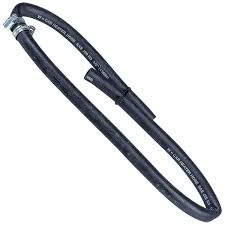Understanding Motorcycle Hydraulic Brake Lines for Enhanced Safety and Performance
دېكابىر . 12, 2024 23:59 Back to list
Understanding Motorcycle Hydraulic Brake Lines for Enhanced Safety and Performance
Understanding Motorcycle Hydraulic Brake Lines
Motorcycles are intricate machines that rely on various components to ensure safe and effective operation. One of the critical systems within a motorcycle is the braking system, which often employs hydraulic brakes due to their efficiency and reliability. Central to a hydraulic brake system is the brake line, a component that plays a pivotal role in the overall functionality of the brakes. This article will delve into the mechanics of motorcycle hydraulic brake lines, their importance, maintenance, and signs of potential issues.
What Is a Hydraulic Brake Line?
A hydraulic brake line is a tube that carries brake fluid from the master cylinder to the brake caliper or brake drum. When a rider pulls the brake lever, the master cylinder creates pressure in the brake fluid. This pressure travels through the brake lines, activating the brakes on the wheels. The system operates based on Pascal's principle, which states that pressure applied to a confined fluid is transmitted undiminished in all directions. Thus, even a slight pull on the brake lever results in substantial braking force at the wheels.
Importance of Hydraulic Brake Lines
Hydraulic brake lines are crucial for the efficiency and safety of a motorcycle. Their design, materials, and condition directly affect braking performance. Most modern motorcycles use reinforced rubber or braided stainless steel for their brake lines. While rubber lines are cost-effective and effective for everyday use, braided stainless steel lines provide superior performance, resist expansion under pressure, and offer enhanced durability and responsiveness during braking.
Additionally, hydraulic systems require a sealed environment. Any damage or failure in the brake lines can lead to brake fluid leakage, which diminishes braking efficiency or can even result in complete brake failure. Therefore, the integrity of these lines is paramount for the rider’s safety.
Maintenance of Hydraulic Brake Lines
Regular maintenance of hydraulic brake lines can help prevent issues and extend the life of the braking system. Here are some maintenance tips for motorcycle owners
1. Visual Inspection Regularly check brake lines for signs of wear, such as cracks, fraying, or discoloration. Pay special attention at connection points and bends where stress can cause failure.
2. Check Brake Fluid Level Monitor the brake fluid reservoir level and ensure it stays within the recommended range. Low brake fluid can indicate leaks in the system.
motorcycle hydraulic brake line

3. Flush the Brake Fluid Hydraulic brake fluid should be replaced every one to two years, depending on the manufacturer’s recommendation. Old fluid can absorb moisture, which reduces braking performance and can lead to corrosion in the brake system components.
4. Watch for Sponginess If the brake lever feels spongy or requires excessive pull to engage the brakes, it could be a sign of air in the brake lines or a fluid leak. This should be addressed immediately.
Signs of Potential Issues
Being aware of the warning signs can help prevent brake failure
- Fluid Leaks Any spots of brake fluid underneath the motorcycle should be investigated. This could signal a leak in the brake line.
- Inconsistent Braking A brake system that feels inconsistent or requires additional pressure to engage may be a sign of air in the system or fluid degradation.
- Brake Warning Light On modern motorcycles, a warning light on the dashboard can indicate issues within the braking system, including problems with the hydraulic lines.
- Unusual Noises Grinding or squeaking sounds during braking can suggest that brake components are wearing out and could escalate to affecting the hydraulic lines.
Conclusion
In conclusion, motorcycle hydraulic brake lines are an essential component of a motorcycle's braking system. Understanding their functions, importance, and maintenance can significantly enhance safety and performance. By being proactive with inspections and maintenance, riders can ensure that their motorcycle brake systems remain in optimal condition, thus promoting safe riding at all times. Remember, when it comes to braking, caution and diligence can protect you while traveling on the open road.
Latest news
-
Durable Air Conditioner Hose for Car – High Pressure, Easy Installation
NewsJul.24,2025
-
Durable Air Conditioner Hose Car – High Pressure & Recharge Solutions
NewsJul.23,2025
-
High-Performance Refrigeration Hose for Efficient Cooling Systems
NewsJul.22,2025
-
Premium Air Conditioner Hose Car - High Pressure Line
NewsJul.22,2025
-
AC Hose: Compressor to Evaporator Line - Durable & Leak-Proof
NewsJul.21,2025
-
Air Brake Hose
NewsMar.07,2025
